by Sunny | Apr 11, 2018 | 01 What's New, Immigration, Research Skills
If you have immigrant ancestors who arrived in the U.S in the 1900s, these 7 sources can help you track their journey—perhaps even to that overseas hometown, so crucial to your genealogy success!
(Thanks to Legacy Tree Genealogists for providing us with this guest blog post. Learn more about them below.)
Do you have an ancestor who came to the United States in the 20th century? If so, you’re in luck, as there are a variety of resources available to help you learn about their journey to the United States and where they came from. The biggest challenge in tracing the ancestry of immigrants is that you must first identify their exact hometown (not just country or region) before you can locate records in their home country. Luckily, there were a variety of records created when an immigrant came to the United States in the 20th century that can provide helpful clues for finding their exact place of birth.
7 record types for finding 20th-century immigrant ancestors
Naturalization and alien registration records
Naturalization records were created as part of an application for citizenship, while alien registration records were created for any non-citizens living in the United States. Both sets of records can contain a wealth of information about immigrants, including their hometown, family members, identifying information such as birthdates or physical descriptions, and when and how they traveled to the United States.
After 1906, there were three parts to naturalization records: a declaration of intention (sometimes called 1st papers), a petition for naturalization (2nd papers) and the naturalization certificate given if citizenship was granted. The declaration of intention is the most useful for genealogical purposes, as immigrants were required to state their birth dates, often family members’/spouses’ birth dates, and usually their hometowns.
Naturalization records were kept by the various federal, state, and county courts, and many have been digitized on various genealogy websites. Naturalization records can be found at the National Archives, FamilySearch.org, and Ancestry.com. After the Alien Registration Act of 1940, all immigrants to the United States were required to register and be fingerprinted. Alien Files began to be kept in 1944 and are now held by the National Archives.
(Editor’s note: Genealogy Gems Premium e-Learning members can also learn about World War I-era enemy alien affidavits, required for all non-naturalized U.S. residents, in the Genealogy Gems Premium Podcast episode #146.)
You can narrow down the time period your immigrant ancestor naturalized by checking various censuses which asked citizenship information (1900, 1910, 1920 and 1930). The 1920 census is particularly helpful as it asked the year of naturalization in addition to the year of arrival. There were three codes recorded in these columns: PA (has submitted papers), NA (naturalized) or AL (alien—never applied to become a citizen). Knowing where they were living at the time of naturalization will help you narrow down which court they may have used.
Keep in mind that until 1922, married women (and their children) were automatically given the citizenship of the husband (if he was a citizen, so was the wife; if a woman married a non-citizen she lost their citizenship until he became a naturalized citizen). Prior to 1922 wives did not need to apply separately, so there will almost never be naturalization papers for married women—you’ll need to look under their husband’s name.
Passenger lists
Passenger lists were created to document the travels of immigrants and are organized by ship. Some list the travelers’ hometown and their closest living relatives there, which can be extremely useful in linking families. Keep in mind that this will usually be the immigrants’ most recent place of residence (which is not always the birthplace).
When searching passenger lists, be sure to check both emigration and immigration records. Passenger lists created at the point of departure and the port of entry and may give slightly different information. For example, the Hamburg Passenger Lists for Germany recorded those leaving, while the New York Passenger Lists give arrivals—you may find your immigrant on both.
United States passenger lists will often also state the relative they are going to meet who is already in the United States—this can help in differentiating people of the same name. (Another bonus for Premium eLearning members: learn about emigration records in Premium Podcast episode #135.)
The port they came from or arrived in can also give clues as to where they were from in the Old Country—people generally immigrated and settled with others who were from the same place. While many of passenger lists have been digitized on the big genealogy websites such as FindMyPast.com, Ancestry.com, and FamilySearch, do not overlook smaller collections like the Immigrant Ancestors Project, which focuses on other emigration records from smaller ports.
Canada Border Crossings
If you are not finding your immigrant in United States passenger lists, see if they came through Canada. Many immigrants arrived in Canada first and then crossed the border to the United States. Keep in mind that only immigrants who came through ports or trains were recorded—if they crossed by horse or car they will not be included in the records. These records vary but often include the name of the immigrant, who they were going to join, their last residence and family member there, their place of birth, and any previous visits to the United States (4). Both Ancestry.com and the free FamilySearch.org have digitized records border crossings to the U.S. from Canada beginning in 1895 (FamilySearch’s go to 1956 and Ancestry.com’s to 1960).
Passport applications
Did your immigrant ancestor ever apply for a passport? Many immigrants went back to visit family in their home country for a few months or even years, before returning back to the United States If they had already become a citizen, they may have applied for a passport to travel. These records can give you a wealth of information about the person who applied but also sometimes their parents.
If you are stuck on an immigrant, look for records about their children—they may provide valuable clues. For example, my great-great aunt applied for a passport in 1918 to be a missionary in China, and she stated that her father had been brought over as an infant from Germany with his parents, who had then naturalized. However, on her passport renewal she stated he was born in Baltimore, so his exact birthplace is still a mystery. However, the passport provided an important clue—now I know to look in the area around Baltimore for naturalization records that could mention his parents. (Click here to read a Genealogy Gem listener’s success story using passport applications and more information on finding them.)
Church records
Many immigrants attended church in their new town along with others from their homeland. Records created at the church, such as baptisms, marriages, and burials, can often provide information about where they came from. Some of these churches even conducted services in the native language of their congregants (i.e. German). These records can be challenging to locate as many of them are still kept by the local churches and have not yet been digitized by the major genealogy websites, but they are well worth it. Try contacting the local church to see if they still have records or know where the records are now. It’s polite to offer a small compensation for their time. Click here to find a list of articles on this website about all different kinds of church records.
Foreign language newspapers
A little-known fact about immigration is that many immigrant communities published local newspapers in the language of their homeland in their new community as a way to stay connected. These newspapers often include birth, marriage and death announcements relevant to the community of immigrants and may list your ancestor. Many of these newspapers are listed on the Library of Congress website Chronicling America, covered in detail in an exclusive interview in the Genealogy Gems Premium Podcast episode #158. (If you’re not a Premium member, consider checking out Lisa Louise Cooke’s book How to Find Your Family History in Newspapers or click here to read articles relating to newspaper research on our blog.
For more help finding immigrant ancestors….
Thanks to Mckenna Cooper, a researcher for Legacy Tree Genealogists, for writing this guest article. Legacy Tree Genealogists is a worldwide genealogy research firm with extensive expertise in breaking through genealogy brick walls. To learn more about Legacy Tree services and its research team, visit www.legacytree.com. Exclusive Offer for Genealogy Gems readers: Receive $100 off a 20-hour research project using code GGP100! (This offer may expire without notice.)
If you prefer the DIY approach to finding your immigrant ancestors rather than hiring assistance, Genealogy Gems is here for you! We gave you lots of links above to further reading. You may have noticed that Genealogy Gems Premium eLearning provides even more resources for you–why not consider whether this may be a good option for you?
Disclosure: This article contains affiliate links and Genealogy Gems will be compensated if you make a purchase after clicking on these links (at no additional cost to you). Thank you for supporting Genealogy Gems!
by Lisa Cooke | Feb 10, 2017 | 01 What's New, Records & databases
Emigration records, not immigration records, are the key topic of this week’s new and updated genealogical collections. Findmypast offers several new collections regarding early British emigration. Also this week, record collections for Australian census substitutes and United States newspapers.

Britain – Emigration Records – Leaving from Britain
Early emigration from Britain 1636-1815 is a collection from Findmypast containing over 21,000 records that allow you to learn if your ancestors left Britain for North America or the West Indies. The collection includes 10 pieces from The National Archives including colonial papers, general entry books, passenger registers, and weekly immigration returns.
Each record includes both an image and a transcript of the original source material. Transcripts may include occupation, year of birth, the year they departed, their destination, and the ship they sailed on. Depending on the type of document, images of the original records may include additional details such as marital status, former residence, and nationality of settler.
Britain – Emigration Records to Barbados
Britain, early emigration to Barbados is another collection from Findmypast, centering on your British ancestors who left for a settlement in Barbados between 1678 and 1715. With over 20,000 assorted documents, this collection includs baptisms, burials, censuses, landowner lists, and more.
Each result provides you with a transcript and image of the original record. Transcripts may contain name, birth year, age, and parish as well as the nature of the event that was being recorded and the date. Depending on the type of document, images of the original records may also include additional details such as fathers’ names or information pertaining to other North American colonies such as the colonies of Rhode Island and Connecticut.
Britain – The Royal African Company Records
Britain, Royal African Company, 1694-1743 is a collection of over 55,000 records to uncover the details of those on board the Royal African Company’s ships to and from Africa as well as the names of those who lived and died at company forts. These Findmypast records came from The National Archives T 70 series, Company of Royal Adventurers of England Trading with Africa and Successors.
The Royal African Company was a mercantile company from 1660 until it was dissolved in 1750. It was first incorporated as the Company of Royal Adventurers Trading to Africa before being reconstituted in 1672 as the Royal African Company of England. You may find the name of one of your British soldiers who traveled with the company among these records.
Australia – Census Substitutes
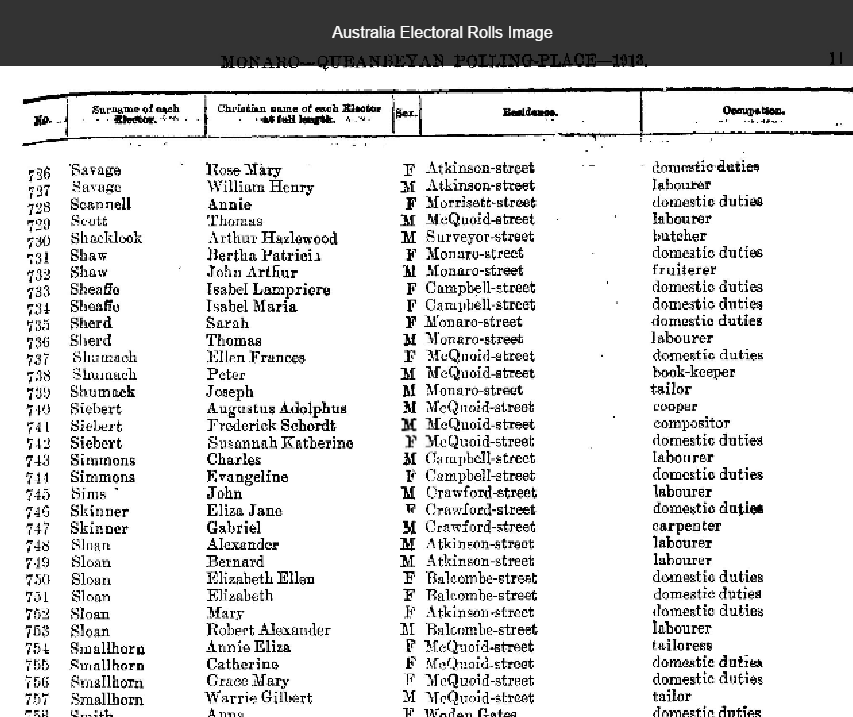 Over 1 million new records have been added to the Findmypast collection of Australia Electoral Rolls. The new additions cover Queensland and Tasmania. Electoral rolls are lists of names of those eligible to vote and can be used as a census substitute.
Over 1 million new records have been added to the Findmypast collection of Australia Electoral Rolls. The new additions cover Queensland and Tasmania. Electoral rolls are lists of names of those eligible to vote and can be used as a census substitute.
Previously, the Rolls existed as simple PDF searches that could only be accessed separately, state by state. Now, they are fully transcribed and placed into one central collection. This makes searching for your Australian ancestors easier and now you can search across all 12.6 million of these census substitutes at once. The entire collection covers New South Wales, Queensland, South Australia, Tasmania, the Northern Territory, and Western Australia and spans the years 1860 to 1959.
United States – Wisconsin – Newspapers
The University of Wisconsin-Milwaukee has digitized their entire collection of the student newspaper, The Post, to mark the 60th anniversary of the paper’s founding. These newspapers cover 55 years and are exclusively online at UWM website.
The newspapers can be searched by decade, name or keyword, and date. Some of the stories are fun and lighthearted like the Sept. 26, 1956, story on the “coed” who was crowned “Alice in Dairyland” after earlier being voted a “datable doll” at a campus carnival. Other stories include a 1975 article dealing with campus safety and parking. Lastly, you will also find more politically charged articles dealing with marijuana use and legalized abortion.
More on Emigration Records
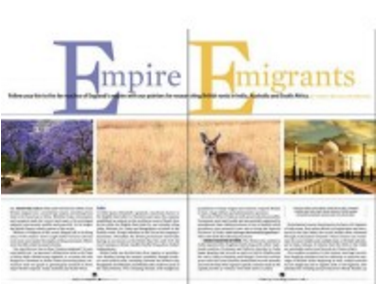 Our own Sunny McClellan Morton has just what you need to learn more on researching your ancestors’ emigration travels. The English Genealogy Guide: Researching Emigrants to Australia, India and South Africa is available from Family Tree Magazine as a downloadable PDF. And, read our blog post titled Emigration Records With an E: When Your Ancestors Left the Country, by Lisa Louise Cooke. You will be amazed at how much there is to learn about emigration…with an “E”!
Our own Sunny McClellan Morton has just what you need to learn more on researching your ancestors’ emigration travels. The English Genealogy Guide: Researching Emigrants to Australia, India and South Africa is available from Family Tree Magazine as a downloadable PDF. And, read our blog post titled Emigration Records With an E: When Your Ancestors Left the Country, by Lisa Louise Cooke. You will be amazed at how much there is to learn about emigration…with an “E”!
by Lisa Cooke | Aug 19, 2016 | 01 What's New, British, Records & databases |
England emigrants to its U.S. colonies appear in new genealogy records online this week. Also: the 1891 New South Wales census; Czech church, land and school records; English parish records; and U.S. collections from the Freedmen’s Bureau, Marine Corps, Coast Guard and New England towns and cities.

Australia – New South Wales census
Findmypast.com has published over 200,000 records from the 1891 New South Wales census. The census collectors’ books are the source, as these are the only surviving documents. “While they provide less detail than a full census would, they can still be a useful aid to historians and genealogists alike in placing people at a specific moment in time,” states the collection description. “Each result will provide you with a transcript and image of the original collector’s books from the 1891 census. Original images may provide you with additional details, such as the number of individuals living in the same household or the number of residents who were Aboriginal or Chinese.”
Czechoslovakia – Church, Land and School
FamilySearch.org has added to its collection of Czech Republic Church Records spanning more than 400 years (1552-1963). You’ll find “images and some indexes of baptisms/births, marriages, and deaths that occurred in the Roman Catholic, Evangelical Lutheran, and Reformed Church parishes, as well as entries in those registers for Jews.” These are taken from parish registers and synagogue records now in regional archives. Though not fully indexed, the browse-only records number over 4 million! (Click here to learn how to use browse-only collections on FamilySearch.org; remember you can use the FamilySearch wiki for help in translating records in another language.)
FamilySearch has also added more than 850,000 browsable images to its existing collection of Czech Republic Land Records 1450-1889 and more than a million browsable images to the existing collection Czech Republic School Registers 1799-1953.
England Emigrants
Remember recently when we blogged about emigrant records, or those created about people leaving a country? Ancestry.com recently posted a new database called Emigrants in Bondage, which it says is “the most important list of ships’ passengers to be published in years.” Indexed are names of “more than 50,000 English men, women, and children… sentenced to be deported to the American colonies for crimes ranging from the theft of a handkerchief to bigamy or highway robbery.” The collection dates cover 1614 to 1775, after which time the British empire was not permitted to ship its “undesirables” to U.S. shores.
England – Parish records – Staffordshire and Sussex
Findmypast has added to its collections of church vital records for Staffordshire, England. Its browsable parish registers, 1538-1900 now includes 300,000 full-color page-by-page images. Separate databases of baptisms, wedding banns, marriages and burials have also been updated.
Also, more than 1.2 million indexed records have been added to FamilySearch’s collection of England, Sussex, Parish Records, dating 1538-1910. Sussex parish registers contain baptisms, marriages/banns, and burials. Date ranges of available records vary by locality; you will want to use the coverage table at the FamilySearch wiki to see what’s available.
U.S. – Freedmen’s Bureau Records
Now that the Freedmen’s Bureau collections have been fully indexed, FamilySearch is dumping them onto its website in batches. This week, they added these new databases:
U.S. – Military
FamilySearch.org has added just over 4 million indexed records to its database of United States Muster Rolls of the Marine Corps (1798-1937). The collection is described as an “index and images of muster rolls of the United States Marine Corps located at the National Archives. The records are arranged chronologically by month, then by post, station or ship.”
This week, the Fold3.com blog reminds us of its Coast Guard collections, in honor of the Coast Guard’s 226th birthday. Hundreds of thousands of search results on the site relate to Coast Guard history, from disapproved Navy survivors pension files to photos dating to the Civil War; accounts of shipwrecks or accidents, WWII war diaries for several units, images of insignia and Navy cruise books.
U.S. – New England
FamilySearch has posted a new index of New Hampshire Vital and Town Records Index for the years 1656-1938. It contains shy of half a million records of births, marriages and deaths. Entries were sourced from multiple archives in New Hampshire; the citation for each record is included in the index entry at the bottom of the record screen.
The New England Historic Genealogical Society has announced improvements to its databases for three New England cities, which now include more searchable fields and images. “Hartford, CT: General Index of Land Records of the Town of Hartford, 1639-1839, is now searchable by grantee and grantor name, and results provide the record type and volume and page of the record (available on microfilm at the Connecticut State Library). Boston, MA: Births, 1800-1849, and Dover, NH: Vital Records, 1649-1892, are now searchable by first name, last name, record type, family member names, date, and location.”
by Lisa Cooke | Jul 20, 2016 | 01 What's New, Immigration |
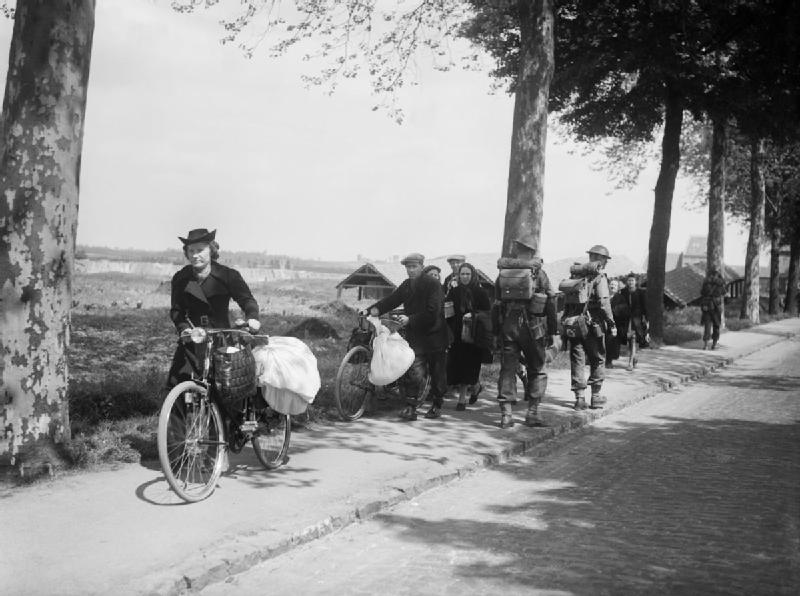
Traveling ancestors created records when they left the country of their origin and when they arrived at their new residence. We often talk about immigration, with an I, but have you researched your ancestors emigration records with an E?
When our ancestors traveled from one place to another, they became two types of migrants. First, they were Emigrants with an E, and then, they were Immigrants with an I. Emigration with an E means someone exiting a country and immigration with an I means someone coming into it. Let’s learn more about emigration…with an E.
I live in a country that doesn’t have much in the way of historical emigration records, but other countries do. I have to remember these emigration records when I start looking overseas for my relatives who were crossing the pond to live here.
EXAMPLES OF EMIGRATION RECORDS
Swedish parishes kept emigration records which are now on Ancestry dating back to 1783. According to the database description, this record set is pretty complete, representing about 75% of those who actually left the country. These rich records can provide place of origin, destination, and the date and place of departure.

For a time, the U.K. also kept outward passenger lists of those leaving the U.K. ports for destinations outside of Europe. The lists include British citizens and those traveling through the U.K. These passenger lists no longer survive for the years before 1890, but they are on Ancestry for the years of 1890-1960. Of course, while writing this post I just had to take a moment to do a bit of searching myself, and that lead to this genealogy gem: my husband’s grandfather, and his parents embarking at Liverpool in 1912!
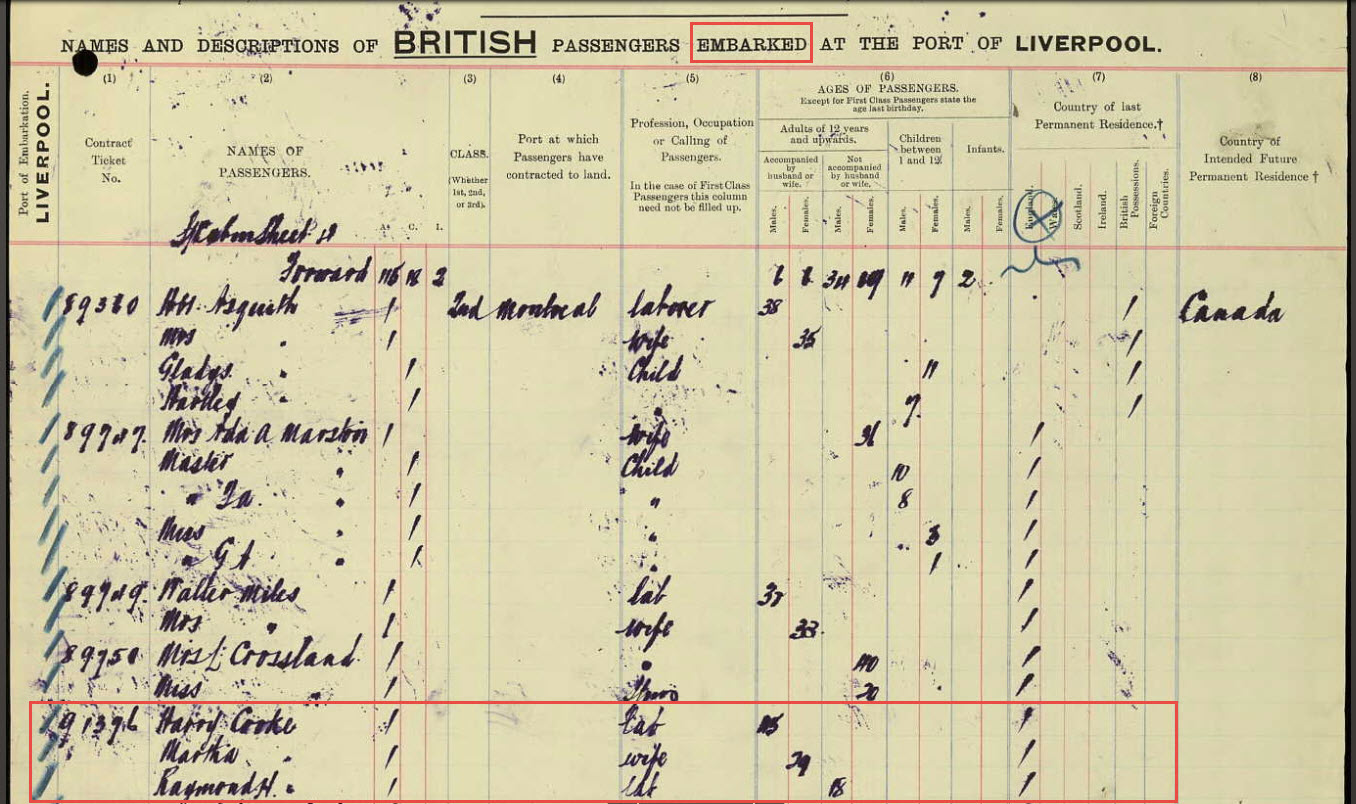
I also spotted this interesting item in the database description. Quoted from the U.K. National Archives website:
“Between 1890 and 1920, among the highest tonnage of ships were leaving British ports bound for North America. Many passengers were emigrants from Britain, Ireland, and Europe. European emigrants bound for America entered the United Kingdom because traveling steerage was less expensive from a British port than from a port in Europe. The shipping companies imposed restrictions on passengers registering; passengers had to have British residency of six weeks to qualify. Many passengers too impatient to qualify for residency changed their names to avoid detection.”
A name change would certainly present a challenge, but it’s very good to know to be on a look out for that situation. This is another example of why it is so important to read the description of the databases you search.
MORE EMIGRATION RECORD COLLECTIONS
A quick search of Ancestry’s card catalog shows emigration collections for Prussia, Switzerland, a few parts of Germany, Jewish refugees from several nations in Europe, and an interesting collection of Dutch emigrants who came to North America with the help of the Canadian and Dutch governments.
Another excellent resource is the FamilySearch Wiki. You can search for the name of the country and the word emigration (with an e) to find out more about your targeted area. I typed in Hungary emigration and found the following information.

Did your emigrant (or immigrant) ancestor generate records in the country he or she left from as well as the country he or she entered? Remember to check!
MORE GEMS ON IMMIGRATION

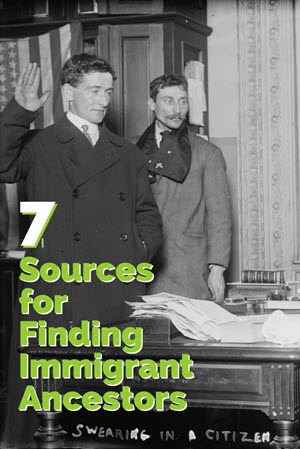

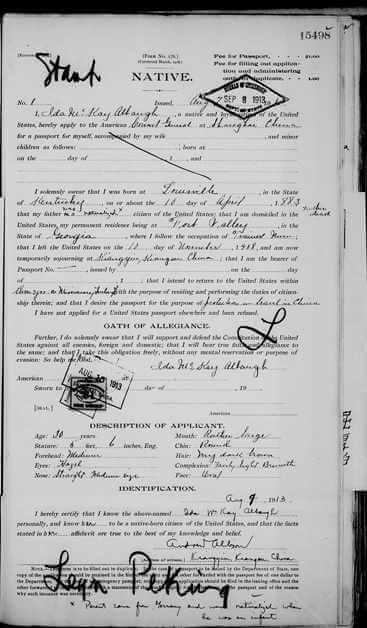

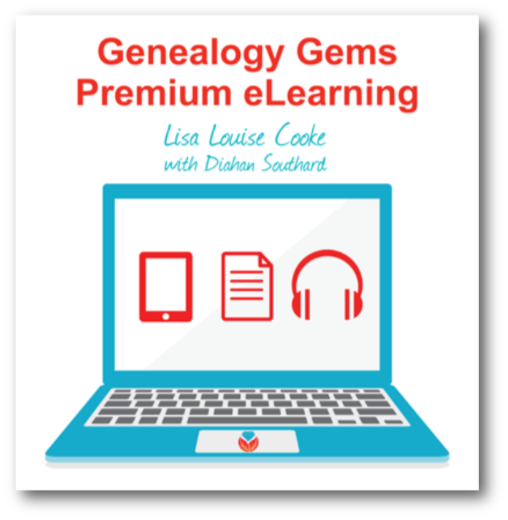

 Over 1 million new records have been added to the Findmypast collection of
Over 1 million new records have been added to the Findmypast collection of  Our own Sunny McClellan Morton has just what you need to learn more on researching your ancestors’ emigration travels. The English Genealogy Guide: Researching Emigrants to Australia, India and South Africa is available from Family Tree Magazine as a downloadable PDF. And, read our blog post titled
Our own Sunny McClellan Morton has just what you need to learn more on researching your ancestors’ emigration travels. The English Genealogy Guide: Researching Emigrants to Australia, India and South Africa is available from Family Tree Magazine as a downloadable PDF. And, read our blog post titled 








